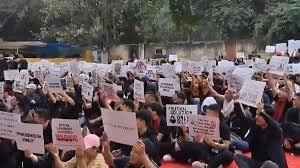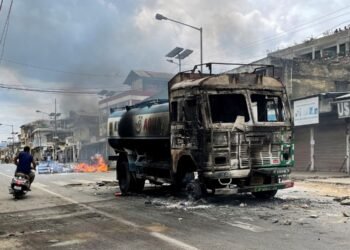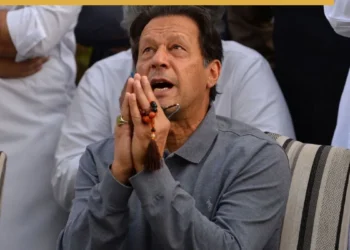As rebel forces take control of Syria’s key cities, including the capital Damascus, speculation grows about the President Bashar al-Assad’s whereabouts and possible involvement in a fatal plane crash. With Hezbollah withdrawing and Assad’s forces retreating, the future of Syria remains in limbo, as international powers push for political dialogue to end the decade-long conflict.
BY PC Bureau
As Syria teeters on the edge of a new era, the fate of President Bashar al-Assad remains shrouded in uncertainty. The Syrian Observatory for Human Rights confirmed that Assad quietly left the country through Damascus International Airport, just before his military forces vacated the facility. Speculation over his whereabouts is rife, with unverified reports circulating that the president may have been involved in a fatal plane crash. These rumors, however, remain unsubstantiated, adding to the mystery surrounding his departure.
This sudden shift in Syria’s power dynamics comes after the rebel group Hayat Tahrir al-Sham (HTS), a faction with roots in Al-Qaeda, seized control of Damascus in a swift and brutal campaign. Just hours before the rebels entered the capital, HTS declared victory in the strategic city of Homs, long a stronghold of the Assad regime. As they advanced, the group symbolized the fall of Assad’s 50-year-old regime with the storming of the infamous Sednaya prison, a notorious site where countless Syrians suffered under the government’s brutal detention practices.
In the capital, the mood has been one of chaos and panic. Streets have become congested with desperate residents scrambling for supplies and withdrawing cash from ATMs as fear spreads like wildfire. There are even reports of protests erupting in Damascus suburbs, with demonstrators toppling statues of Assad’s father, Hafez al-Assad, signaling the deep-rooted disdain that has simmered beneath the surface for years.

Meanwhile, Assad’s closest allies are also retreating. Hezbollah, the powerful Lebanese militia that has been a staunch supporter of the Syrian regime, has begun withdrawing its fighters from key positions around Damascus. Sources close to Hezbollah confirmed that thousands of its troops have been redirected to other areas, with some heading towards Latakia in Syria, while others returned to Lebanon. This marks a critical loss for Assad’s military strategy, further weakening the regime’s ability to maintain its grip on power.
As Syrian soldiers abandon their posts in southern regions like Daraa—an area that has long been a symbol of resistance since the 2011 uprising—the collapse of Assad’s military defenses accelerates. According to reports, large numbers of these soldiers have fled to neighboring Iraq, seeking refuge after being pushed off key fronts. The loss of Daraa, which played a pivotal role in sparking the Syrian conflict, further underscores the unraveling of Assad’s rule.
As the military situation deteriorates, calls for a political solution have intensified from the international community. The United Nations’ special envoy to Syria, Geir Pedersen, has urged for urgent political talks to resolve the conflict, referencing a 2015 Security Council resolution that laid out a roadmap for peace. With over 370,000 Syrians displaced in the wake of the recent violence and nearly 1,000 people killed, the urgency for dialogue grows stronger.
Meanwhile, Assad’s key backers, Russia and Iran, have reiterated their support for the Syrian leader, despite the growing instability. Russian Foreign Minister Sergey Lavrov and Iranian officials have expressed a desire to see the conflict resolved through political means but continue to back Assad’s regime. On the other hand, US President-elect Donald Trump has called for the United States to refrain from further intervention in Syria, urging a focus on a political resolution without direct involvement.
As the dust settles in Syria, the question remains: where is Bashar al-Assad? His sudden disappearance and the rapid collapse of his regime leave Syrians grappling with the uncertain future of their war-torn nation. For a country that has endured over a decade of conflict, the road ahead seems uncertain, but there is one certainty—Syria’s struggle for peace and stability is far from over.













